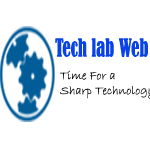Table of Contents
Introduction
In the dynamic landscape of web development, choosing the right framework is crucial for the success of any project. As businesses strive to offer seamless and responsive web applications to their users, the selection of an appropriate web application development framework becomes a pivotal decision. Web Application Development Services providers play a vital role in this process, offering expertise in leveraging the capabilities of various frameworks. In this article, we will delve into the details of some popular web application development frameworks, comparing their features, advantages, and use cases.
1) AngularJS
AngularJS, developed and maintained by Google, is a widely-used front-end framework. It’s known for its two-way data binding, modular architecture, and the ability to create single-page applications (SPAs). Developers appreciate AngularJS for its dependency injection, which facilitates easier unit testing and code maintenance. However, the learning curve can be steep for beginners. It’s an ideal choice for large-scale enterprise applications that require real-time updates and dynamic content.
2) ReactJS
Developed by Facebook, React has gained immense popularity for building user interfaces. It follows a component-based architecture, allowing developers to create reusable UI components. One of React’s strengths is its virtual DOM, which enhances performance by minimizing direct manipulation of the actual DOM. React Native, an extension of React, enables the development of cross-platform mobile applications. React is well-suited for applications that require a high level of interactivity and dynamic content.
3) Vue.js
Vue.js is a progressive JavaScript framework that is incrementally adoptable. It focuses on the view layer and is designed to be easy to integrate with other libraries or existing projects. Vue.js is known for its simplicity and flexibility, making it an excellent choice for developers ranging from beginners to experienced professionals. It provides two-way data binding and a component-based architecture similar to React, but with a gentler learning curve. Vue.js is suitable for building small to medium-sized applications and can be gradually scaled as needed.
4) Django
Django is a high-level Python web framework that follows the Model-View-Controller (MVC) architectural pattern. It emphasizes rapid development, code reusability, and the “don’t repeat yourself” (DRY) principle. Django’s built-in admin panel simplifies content management and administrative tasks. It includes an Object-Relational Mapping (ORM) system, simplifying database interactions. Django is an excellent choice for developers who prefer a robust and all-inclusive framework for building large-scale applications.
5) Ruby on Rails
Ruby on Rails, often referred to as Rails, is a server-side web application framework written in Ruby. Rails follows the convention over configuration (CoC) and don’t repeat yourself (DRY) principles, streamlining development and promoting best practices. It includes a vast set of libraries and tools, making it easy to build feature-rich applications quickly. Ruby on Rails is known for its developer-friendly syntax and is suitable for startups and small to medium-sized projects.
6) Express.js
Express.js is a minimal and flexible Node.js web application framework. It is designed for building web and mobile applications and follows the Model-View-Controller (MVC) pattern. Express.js is lightweight, allowing developers to have more control over the application’s components. It is often used in conjunction with other libraries and frameworks to build scalable and high-performance applications. Express.js is ideal for building RESTful APIs and is a popular choice for Node.js developers.
7) Flask
Flask is a lightweight and micro web framework for Python. It is easy to learn and use, making it a great choice for small to medium-sized projects. Flask follows the WSGI (Web Server Gateway Interface) standard and provides the essentials for web development without imposing too much structure. Developers appreciate Flask for its simplicity and flexibility, allowing them to choose their preferred libraries and tools. Flask is well-suited for building prototypes and minimalistic applications.
Conclusion
Selecting the right web application development framework is a critical decision that can significantly impact the success of a project. Each framework has its strengths and weaknesses, and the choice depends on various factors such as project requirements, team expertise, and scalability needs. Web Application Development Services providers play a crucial role in guiding businesses through this decision-making process, ensuring that the chosen framework aligns with their goals and objectives. Whether it’s the robustness of Django, the flexibility of Express.js, or the simplicity of Flask, understanding the unique features of each framework is key to delivering successful web applications in today’s competitive digital landscape.





_3-6.jpg)




